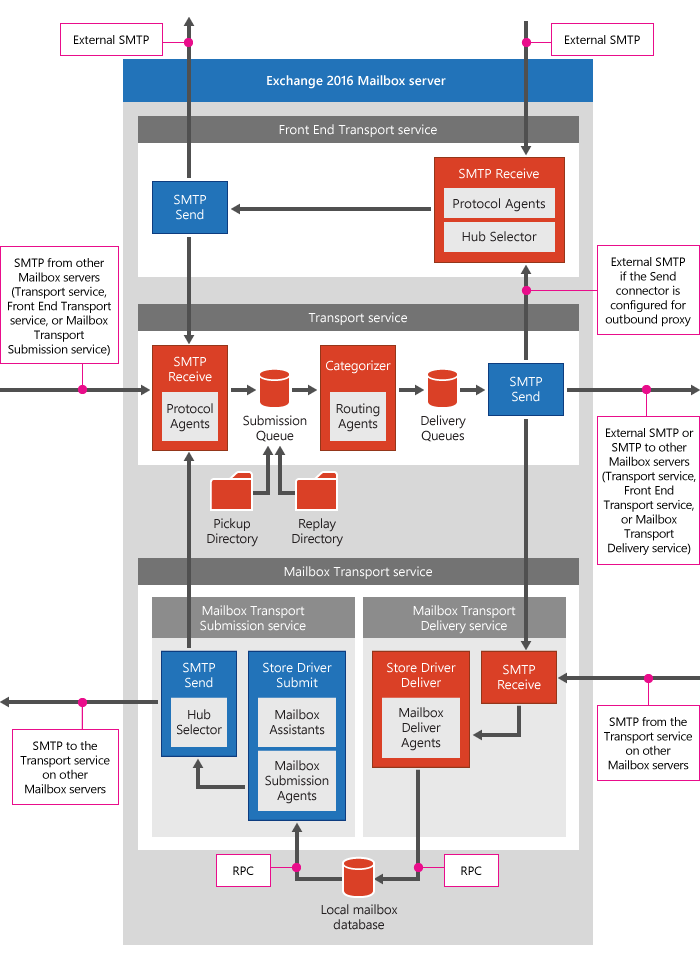Overview of The Exchange 2016 Transport pipeline services:
- Front End Transport service on Mailbox servers This service acts as a stateless proxy for all inbound and (optionally) outbound external SMTP traffic for the Exchange 2016 organization. The Front End Transport service doesn’t inspect message content, doesn’t communicate with the Mailbox Transport service, and doesn’t queue any messages locally.
- Transport service on Mailbox servers This service is virtually identical to the Hub Transport server role in Exchange Server 2010. The Transport service handles all SMTP mail flow for the organization, performs message categorization, and performs message content inspection. Unlike Exchange 2010, the Transport service never communicates directly with mailbox databases. That task is now handled by the Mailbox Transport service. The Transport service routes messages among the Mailbox Transport service, the Transport service, the Front End Transport service, and (depending on your configuration) the Transport service on Edge Transport servers. The Transport service on Mailbox servers is described in more detail later in this topic.
- Mailbox Transport service on Mailbox servers This service consists of two separate services:
- Mailbox Transport Submission service This service connects to the local mailbox database using an Exchange remote procedure call (RPC) to retrieve messages. The service submits the messages over SMTP to the Transport service on the local Mailbox server or on other Mailbox servers. The Mailbox Transport Submission service has access to the same routing topology information as the Transport service.
- Mailbox Transport Delivery service This service receives SMTP messages from the Transport service on the local Mailbox server or on other Mailbox servers and connects to the local mailbox database using RPC to deliver the messages.
The Mailbox Transport service doesn’t communicate with the Front End Transport service, the Mailbox Transport service, or mailbox databases on other Mailbox servers. It also doesn’t queue any messages locally.
- Transport service on Edge Transport servers
This service is very similar to the Transport service on Mailbox servers. If you have an Edge Transport server installed in the perimeter network, all mail coming from the Internet or going to the Internet flows through the Transport service Edge Transport server. This service is described in more detail later in this topic.
The following diagram shows the relationships among the components in the Exchange 2016 transport pipeline.

#ThatLazyAdmin


Be First to Comment